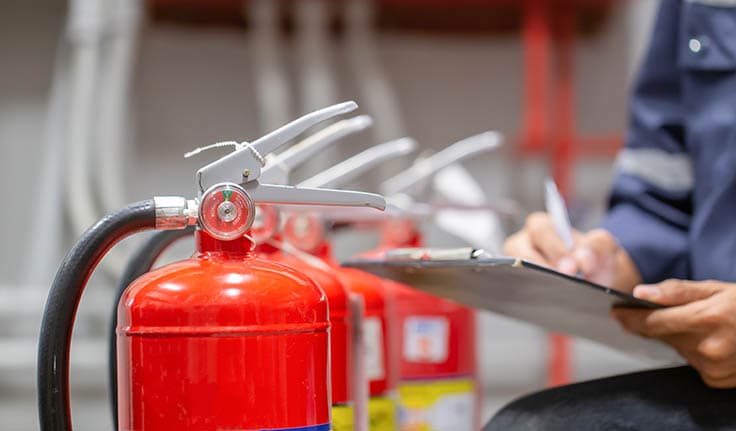A homeowners insurance claim for roof damage or replacement can be daunting. In this article, we help guide you through the process.
Dealing with roof damage can be a significant challenge for homeowners, not only due to the complexity of the repairs needed but also in understanding whether such repairs or replacement are covered by homeowners insurance. A roof is a critical component of any home, protecting it from the elements and contributing to overall structural integrity. When damage occurs to the roof, whether from severe weather events, natural wear and tear, or unexpected incidents, the path to repair and replacement can be daunting.
This is why understanding whether insurance coverage may or may not factor in is important. Understanding your homeowners insurance policy and the specific terms of coverage with respect to roof damage is essential in this context. Navigating the insurance claim process effectively can make a difference in how quickly and smoothly the process proceeds. This article aims to help guide homeowners through some of the intricacies of the claim process, providing some clarity on homeowners insurance policies and offering insights into the claim filing procedure for roof replacement.
Understanding Your Homeowners Insurance Policy
Becoming familiar with your homeowners insurance policy is fundamental in understanding whether coverage may be available for roof repair or replacement. Homeowners insurance policies can vary significantly in terms of what they cover, especially when it comes to roof damage. It is first important to distinguish whether a roof claim is for repair or replacement.
Repair coverage typically addresses partial damage to the roof, such as missing shingles or minor leaks. This coverage is often subject to the age and condition of the roof at the time of the damage.
Replacement coverage, on the other hand, is for more extensive damage, where a significant part or the entire roof needs to be replaced. This is particularly relevant in cases of severe weather events or major accidents.
It's important to be aware of your insurance policy’s limitations and exclusions. Some policies may have specific exclusions or limitations if a roof is of a certain age. Deductibles and coverage limits also play an important role in how much of the replacement cost the insurance may cover. Familiarizing yourself with these aspects of your policy can help set realistic expectations and prepare you for potential out-of-pocket expenses.
Identifying Whether Roof Damages Are Covered
Understanding which types of roof claims are typically covered by homeowners insurance policies is crucial for homeowners. While the terms, conditions, and exclusions of each policy will vary, roof claims resulting in damages caused by covered perils such as fire, lightning, wind, and hail are typically covered. Some homeowners insurance may also cover roof damage caused by weight of ice, snow, or sleet. These events can cause significant harm to roofs, leading to the need for either repair or complete replacement.
Damages resulting from a tree or other objects falling on the roof may also be covered by a typical homeowners insurance policy. However, it's important to note that the coverage can depend on the specific circumstances of the damage and the conditions outlined in your policy.
Regular wear and tear or damage resulting from lack of maintenance, however, is usually not covered by homeowners insurance. Regular maintenance and care are important to help to prevent foreseeable damages. Understanding these distinctions can help homeowners in identifying whether their roof damages are likely to be covered under their insurance policy.
Documenting Roof Damage Effectively
Proper documentation is a critical element in helping to expedite a homeowners insurance claim for roof damage or replacement. To effectively document the damage to your roof, a systematic and thorough approach is needed. It’s important to gather as much evidence as possible to support your claim. Here are some steps you can take:
Take photos: Take clear and detailed photos of the damaged areas of your roof. Make sure to capture the extent of the damage and any visible signs of the cause, such as fallen branches or hailstones, and wider shots to show the context of the damage.
Document the date and time: Note the date and time the damage occurred. This information will be important for your insurance claim.
Keep a record of weather conditions: If the damage was caused by a storm or severe weather, note the weather conditions at the time of the incident. This can help establish a cause for the damage.
Preserve evidence: If there are any objects or materials that caused the damage, such as a fallen tree branch, keep them as evidence. Do not dispose of any damaged items until your insurance company has had a chance to assess the damage.
Report the damage promptly: Contact your insurance company as soon as possible to report the damage and initiate the claims process. The insurance company should then provide you with specific instructions on how to proceed.
Remember, it's important to review your homeowners insurance policy and consult with your insurance agent for specific guidance on documenting roof damage for a claim.
Working with Roofing Professionals for Inspection
Seeking a professional assessment may also help provide evidence to support an insurance claim for roof repair or replacement. Professional roofing contractors or inspectors can provide a detailed inspection report, which typically includes an expert opinion on the cause of the damage, the extent of the damage, and the necessary repairs or replacement needed.
Having a roofing professional involved also helps in accurately estimating the cost of repairs or replacement, which is crucial for the insurance claim. Moreover, their expertise can be invaluable in identifying damages that might not be immediately obvious to the untrained eye.
It’s important to choose a reputable and experienced roofing professional for the inspection. This professional assessment not only aids in supporting your claim but also helps ensure that all aspects of the roof damage are properly addressed and accounted for during the claims process.
Working with knowledgeable professionals can greatly assist in navigating the complexities of the claim process.
Navigating the Insurance Claim Process
Understanding the insurance claim process is essential for homeowners seeking coverage for a roof repair or replacement claim. This process typically involves several key steps that need to be followed diligently to help ensure a smooth and successful claim.
The first step is to contact your insurance provider as soon as possible after discovering the roof damage. Prompt communication is crucial. During this initial contact, you will likely be required to provide basic information about the damage and your policy number.
Next, you will need to fill out the claim forms provided by your insurance company. These forms should be completed accurately and comprehensively, detailing the extent of the roof damage. Attach all relevant documentation to your claim, including the professional roof inspection report and any photographs or maintenance records you have compiled.
The next step is to submit your claim. It's advisable to keep a copy of all the documents submitted for your records. Once your claim has been submitted, the insurance company will typically schedule an inspection to assess the damage.
Throughout this process, keep a record of all communications with your insurance company, including dates, times, names of individuals spoken to and a brief summary of the discussions. This record can be valuable in case of any disputes or misunderstandings.
Dealing with Insurance Adjusters
Insurance adjusters play a pivotal role in the roof claim approval process. The insurance company will assign an insurance adjuster to visit your property and conduct a thorough inspection of the roof in order to assess the scope of damages and determine the cause.
It's important to be prepared for this inspection. Have all your documentation ready and accessible, including your own photos and the inspection report of any roof inspector you may have hired. It's also advisable to be present during the adjuster's inspection, as this gives you the opportunity to point out all areas of concern and discuss the damage directly.
When interacting with the adjuster, remain courteous and cooperative, but also be assertive in ensuring all damage is thoroughly assessed. If you have any concerns about the adjuster's findings, don’t hesitate to ask questions or seek clarification.
Remember, the adjuster's report can significantly influence the outcome of your claim. Therefore, it's crucial to ensure that the adjuster has a comprehensive understanding of the extent of the damage. If you disagree with the adjuster's assessment, you may consider getting a second opinion from another roofing professional or a public adjuster to support your case.
Choosing a Contractor
The choice of contractor is a significant factor that can impact the success of an insurance claim for roof repair or replacement. Selecting a reputable roofing contractor who has experience in dealing with insurance claims is crucial. This expertise helps ensure that the roofing work aligns with the insurance company's requirements and standards.
When choosing a contractor, it's important to conduct thorough research. You may want to look for contractors with a strong local reputation and positive reviews from previous customers. Verify their licensing, insurance coverage, and any professional certifications they may hold. Experience in handling insurance claims is particularly important, as these contractors should have a better understanding of the processes and documentation required by insurance companies.
Ask potential contractors about their experience with insurance claims and how they handle the entire process. It may be beneficial to choose a contractor who is willing to work directly with your insurance company, facilitating communication and ensuring that all necessary documentation is provided.
Additionally, consider getting multiple estimates to compare prices and services offered. However, the decision should not be based solely on price; the quality of work and the contractor's reliability and expertise in insurance matters are also important factors to consider.
Avoiding Scams and Storm Chasers
After experiencing roof damage, especially following major weather events, homeowners must be vigilant to avoid scams and storm chasers. These fraudulent operators often take advantage of homeowners in distress, offering quick repairs at low costs, but often deliver subpar work or disappear after taking a payment.
To help avoid such scams, be wary of contractors who show up unsolicited at your doorstep offering immediate repairs. Legitimate and reputable contractors typically don’t need to solicit business in this manner, especially after a storm.
Always ask for proof of licensing, insurance coverage, and references. A legitimate roofing contractor should be able to provide this information readily. Be cautious of contractors who pressure you to sign a contract quickly or pay a large deposit upfront. It's advisable to pay in stages as the work progresses or upon completion.
Additionally, check with your local Better Business Bureau or similar consumer protection agencies for any complaints or alerts regarding a potential roofing contractor you want to use before agreeing to such work.
What Can You Do If Your Claim Is Denied?
Facing a denial of an insurance claim for roof repair or replacement can be disheartening, but it's important to have a plan of action. Understanding the reasons behind the denial and the steps to appeal the decision are crucial in these situations.
First, request a detailed explanation from your insurance company regarding the denial. This should be done in writing so you have a formal record. Understanding why the claim was denied is essential, as it guides your next steps. Common reasons for denial include lack of coverage under the policy for the particular claim, the damage being deemed as resulting from normal wear and tear, or insufficient evidence of damage.
Once you have obtained the specific reason for the claim denial, review your insurance policy in detail. Look for specific clauses or terms that relate to the reason for the denial. This can help in identifying any discrepancies or misunderstandings in the interpretation of your policy.
If you believe the claim was unjustly denied, you may consider an appeal of the decision. This process is typically set forth in the terms and conditions of your policy and generally involves submitting a written appeal to the insurance company, along with any additional documentation or evidence that supports your claim. This may include a more detailed report from a roofing professional or additional photos of the damage. Be sure to consult your policy to ensure you follow the appeals process as outlined therein.
It can also be beneficial to seek the advice of a public adjuster or a legal professional who specializes in insurance claims to help guide you through the process.
Remember, understanding the specific terms and conditions of your homeowners policy is very important when dealing with a denied insurance claim. The appeals process can be challenging, but it's an important step in advocating for your rights as a policyholder.
Conclusion
In summary, whether a claim for roof damage is covered under a homeowners insurance policy depends on the terms, conditions and exclusions of the particular policy. Be sure to understand your policy and maintain documentation for the claim. You may also consider seeking out professional assistance to guide you through this process. Should a claim be denied, educate yourself on your insurance company’s appeal process and be sure to have documentary evidence in support of any appeal.
Working with knowledgeable professionals can greatly assist in navigating the complexities of the claim process. Connect with Acrisure to help find the homeowners insurance solution that works for your needs.
Contact us today, or request a homeowners insurance quote online now.







